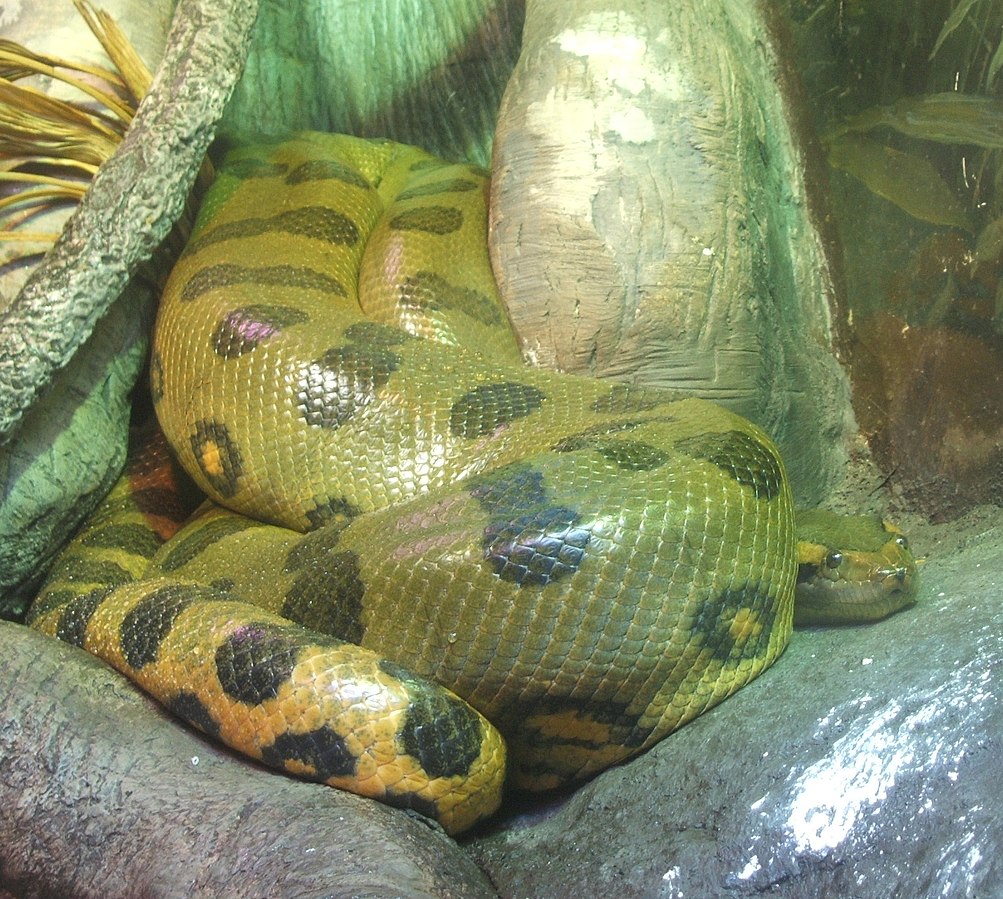A Female Anaconda Gets Pregnant without male contact and Gives Birth to Two Babies in Captivity

Representative pic for Green anaconda. CC
By Neucrad Health India news desk June 18, 2019
In a rare and surprising incident, staffers at the New England Aquarium discovered that a female anaconda had given birth to two babies along with about a dozen stillborn without any male contact. How would you explain this incident? A miracle, divine intervention, or the anacondas mated without being noticed by the aquarium employees. It is now of the above phenomenon. The female anaconda impregnated herself through ‘parthenogenesis.’ or virgin-birth. Though this phenomenon is quite common among plants and insects, scientists have also documented its presence among lizards, birds, shark, and snake species. Before this incident, only once Biologists have witnessed such an event in captivity at a zoo in the United Kingdom during 2014. Scientists have also conducted DNA testing of the new-borns anacondas proving that they are genetically identical to the mother.
How do anacondas reproduce in captivity?
It is not uncommon for green anacondas to reproduce in captivity. Snakes of the Amazon basin find no difficulties in propagation in aquariums. If these snakes are left to breed freely, then aquarium keepers do not get surprised if they give birth to about a dozen babies at a time. Though natural reproduction is the dominant mode of propagation among the anacondas, there are instances where they have undergone parthenogenesis even in the forest. Many aquarium keepers carefully segregate amazon snakes into males and females before introducing them into aquarium if they want to keep a check on the number of inmates. However, parthenogenesis proves that, life finds its own way, no matter, how much human beings try to put a check on it.
What is the story of the female anaconda at the New England Aquarium?
The green anaconda about which we are talking about was named Anna. She weighs about 30 pounds or 13.6 kilograms and is approximately 10 feet in length. Her age is eight years, and since her birth, she has never been exposed to any male anaconda. Last winter, when she gave birth to three babies, most of the aquarium veterinarians were taken by surprised. However, one of the new-born snakes expired within a few days after birth. Vets had an idea of propagation by parthenogenesis, which usually takes place in plants and insects when natural reproduction get prevented by human-made barriers. Little, did they expect that such a thing is going to happen in their aquarium. So, before making the incident official, aquarium staff at first re-examined the biological sex of all the roommates of Anna.
The aquarium also has a detailed history of Anna’s life. She was born at a certified reptile organisation and later shifted to New England Aquarium as an immature snake. Throughout her life, she did not maintain any contact with any male partners. In this scenario, there was no chance of delayed embryo implantation. To full-proof their speculations, the aquarium staffers also requested a DNA test of Anna’s babies. Their guesswork was perfect; the DNA test revealed both of Anna’s babies were exact genetic copies of the mother. It is only possible when an animal gives birth to baby asexually.
How are the new-born anacondas responding to nature?
Aquarium veterinarians are still not allowing any public viewing of the young anacondas. They want to condition them for regular human contact before revealing them to the outer world. The zoo-staffers are taking due care of them and slowly making them accustomed to public viewing. Though the two babies are exact genetic copies of each other, nature-wise they are entirely dissimilar. The thinner of the two babies is of laid back nature and does not like to move around in the aquarium. The other one is a born explorer and likes sniffing out things with its tongue.
This was a brief discussion about the virgin birth of the green anaconda-Anna at the New England Aquarium.






